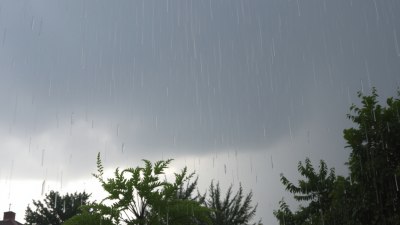Why Some Wind Gusts Are Unexpectedly Strong
Explore the factors behind unexpectedly strong wind gusts and their impacts on weather patterns.

Image by macrovector on Freepik
Wind gusts are often a mysterious phenomenon in meteorology, with their unexpected strength catching many off guard. While forecasts provide some guidance, there are various factors that can contribute to the unpredictability of wind gusts. Understanding these elements not only enlightens us about the atmospheric dynamics involved but also helps in making sense of weather events that seem to defy expectations. This article delves into the mechanics of wind gusts, their formation, and the reasons why they can sometimes be much stronger than anticipated.
What Are Wind Gusts?
Wind gusts are short bursts of wind that are significantly stronger than the sustained winds observed in an area. Generally, gusts are defined as winds that exceed the average wind speed by at least 10 knots (approximately 12 mph or 19 km/h) for a duration of at least 10 seconds. These gusts can occur in various situations, ranging from calm weather to severe thunderstorms, and their unpredictability poses challenges both for meteorologists and the general public.
Factors Influencing Wind Gusts
Several factors contribute to the formation and strength of wind gusts. Understanding these factors can help explain why some gusts are unexpectedly strong.
1. Atmospheric Instability
When the atmosphere is unstable, air parcels can rise more easily, leading to stronger wind gusts. For instance, heated ground can warm the air above it, causing it to rise rapidly. As the air ascends, it can create turbulence and lead to strong downdrafts. This process is often observed in thunderstorms, where sudden gusts can accompany severe conditions.
2. Terrain Features
The landscape plays a significant role in the velocity of wind gusts. Mountains, hills, and valleys can alter the flow of air, causing it to speed up or change direction abruptly. When wind flows over a mountain ridge, for example, it accelerates on the leeward side, often resulting in stronger gusts. This phenomenon is commonly referred to as 'wave breaking.'
3. Temperature Inversions
A temperature inversion occurs when a layer of warmer air traps cooler air near the surface. This stable layer can result in a buildup of energy beneath it. When this energy is released, it can create sudden downdrafts that translate into strong wind gusts. Inversions are particularly prevalent during winter months or clear nights.
4. Frontal Boundaries
Frontal systems, such as cold fronts or warm fronts, can create sharp differences in wind speed and direction over short distances. When these fronts move through an area, they can trigger strong wind gusts. Cold fronts, for instance, often bring a sudden increase in wind speed as colder, denser air pushes out the warmer air ahead of it.
5. Local Weather Phenomena
Local weather phenomena, including sea breezes, land breezes, and thunderstorms, can produce gusts that are stronger than anticipated. Sea breezes develop during the day as the land heats up faster than the water, creating a pressure gradient that accelerates the wind. Land breezes occur at night and can also generate unexpectedly strong gusts in certain conditions.
6. Thunderstorms and Microbursts
One of the most notorious sources of strong gusts is thunderstorms, particularly when associated with microbursts. A microburst is defined as a small, intense downdraft occurring within a thunderstorm that can produce damaging winds at the surface. These winds can exceed 100 mph, leading to devastating effects, and their sudden nature makes them exceptionally difficult to predict.
Recognizing Gust Patterns
Predicting gust strength requires an understanding of the environmental conditions present. Meteorologists use models and forecast tools to deduce potential gust strength and pinpoint areas at risk for extreme wind events. Various radar technologies can detect wind patterns and help identify areas of potential gusts, but there is always a level of uncertainty due to the dynamic nature of the atmosphere.
The Role of Climate Change
As climate change continues to alter global weather patterns, the frequency and intensity of extreme weather events are also changing. Research indicates that warmer temperatures can increase atmospheric instability, potentially leading to more frequent and intense wind gust events. Additionally, as storm patterns shift, so too do the regions affected by unexpected gusts.
Preparation and Awareness
Given the unpredictability of strong wind gusts, preparation is key. Understanding local weather forecasts, recognizing warning signs of thunderstorms, and being aware of the potential for sudden gusts can significantly enhance safety. For those involved in outdoor activities, securing equipment and monitoring weather conditions are essential practices to prevent accidents during unexpected wind events.
Unexpectedly strong wind gusts can arise from various complex interactions in the atmosphere, primarily influenced by factors such as instability, terrain features, and local weather phenomena. While forecasting advancements have improved our ability to anticipate these gusts, uncertainty remains. As we continue to learn about the dynamics of wind and weather patterns, it becomes increasingly clear that vigilance, preparation, and education are vital in facing the challenges posed by strong wind gusts.











